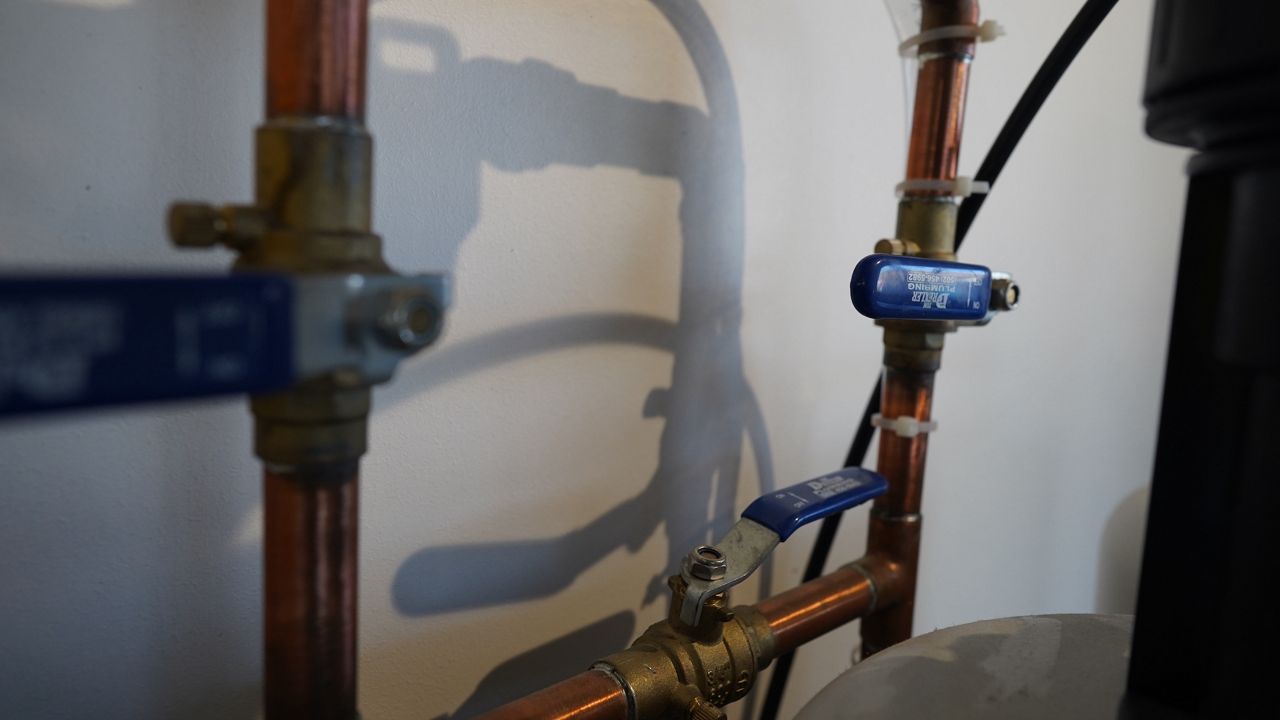ERLANGER, Ky. — As brutally cold temperatures hit the commonwealth, the Northern Kentucky Water District is offering several tips to help prevent frozen pipes.
The district said no matter the strength of a plastic or metal pipe, freezing water expansion creates pressure and thus can cause pipes to break. Pipes that freeze most frequently are those exposed to severe cold such as outdoor hose bibs, swimming pool supply lines and water sprinkler lines. Water supply lines in unheated interior areas such as basements, attics or garages and pipes that run against exterior walls with little to no insulation are also at risk.
Before cold weather hits, the NKWD recommends these measures to prevent pipes from freezing:
- Drain water from swimming pool and water sprinkler supply lines following manufacturer's or installer's directions.
- Remove, drain and store hoses used outdoors.
- Close inside valves supplying outdoor hose bibs, and open the outdoor hose bibs to allow water to drain. Keep the outside valve open so any water remaining in the pipe can expand without causing the pipe to break.
- Add insulation to areas such as attics and basements to maintain higher temperatures.
- Consider installing specific products made to insulate water pipes.
To prevent frozen pipes, the district said you should keep garage doors closed if it has water supply lines and open kitchen and bathroom cabinet doors to allow warmer air to circulate around the plumbing. Other suggestions include setting your thermostat to the same temperature during both daytime and nighttime hours and letting cold water drip from any faucet served by exposed pipes, even at a trickle, to prevent them from freezing.
If you're going away during cold weather, be sure to leave the heat on in your home set to a temperature no lower than 55 degrees Fahrenheit.
The NKWD said if you turn on your faucet and only a trickle comes out, suspect a frozen pipe. Here are some ways you can thaw it:
- Keep the cold water faucet open. As you treat the frozen pipe and the frozen area begins to melt, water will flow through the frozen area, helping melt ice.
- Apply heat to the pipe using an electric heating pad wrapped around the pipe, an electric hair dryer, a portable space heater or wrap pipes with towels soaked in hot water. Do not use a blowtorch, kerosene or propane heater, charcoal stove or other open flame device.
- Apply heat until full water pressure is restored. If you're unable to locate or access the frozen area, call the district to check the meter supply or a licensed plumber if the meter is not the issue.
- Check all other faucets in your home to find out if you have additional frozen pipes. The NKWD said if one pipe freezes, other pipes may freeze, too.
Visit www.nwkywater.org or call 859-578-9898 for more information.
Connor Smith - Digital Producer
Connor Smith is a digital producer for Spectrum News 1 in Louisville, Kentucky. He joined the team in November 2023 and hails from the Chicago area. In summer 2023, he received his Master of Science in Journalism from Northwestern's Medill School in Chicago, where he covered Super Bowl LVII, the Chicago Marathon and other stories around the city.











